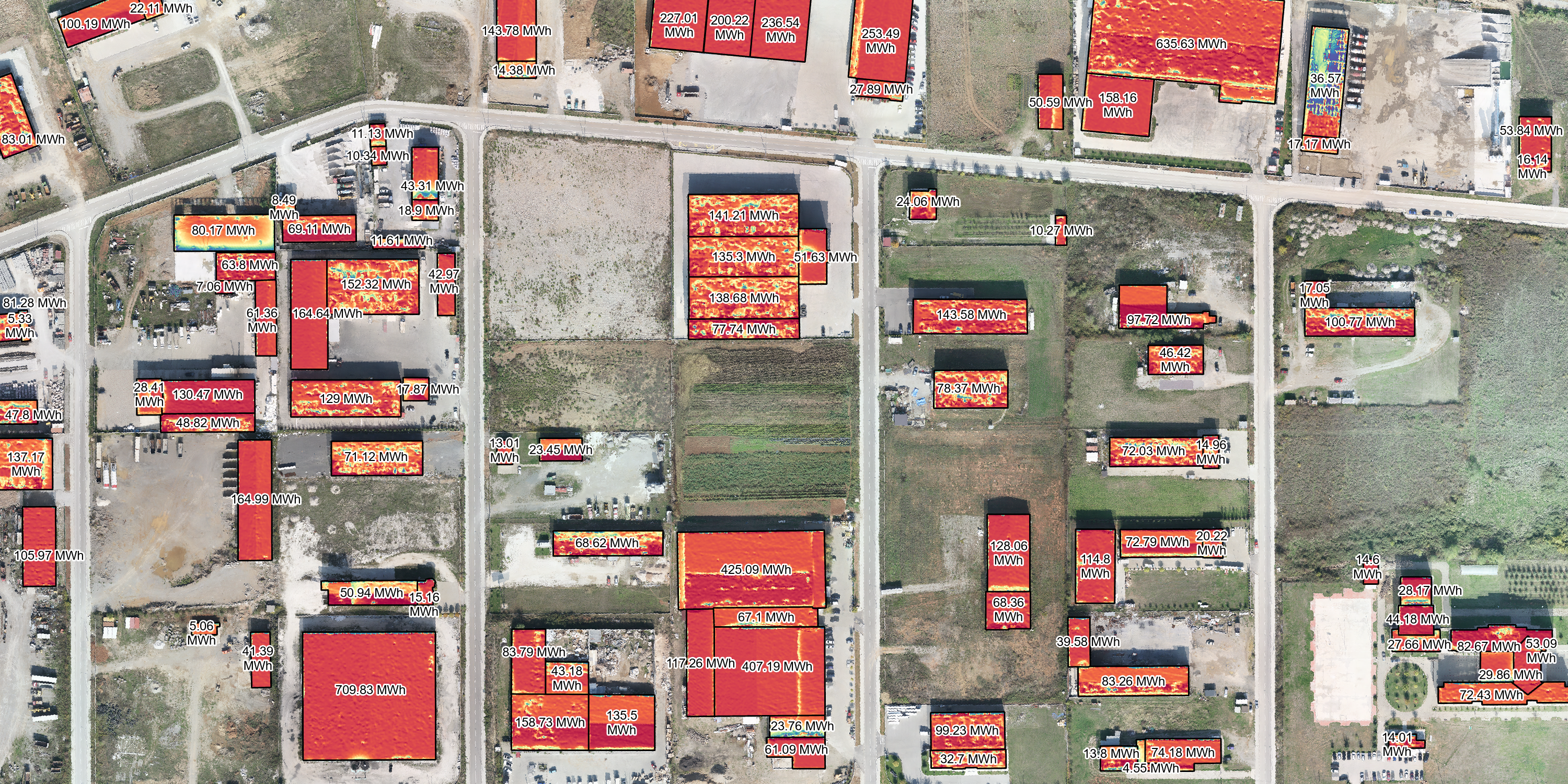
As Europe’s energy crisis deepens and global climate change impacts intensify, finding new and efficient ways to promote and invest in clean, renewable energy is critical. Through the USAID Kosovo Energy Security of Supply (KESS) Activity, DT Global is pioneering a new approach to expand renewable energy access: using drones and Geospatial Information System (GIS) technology to improve market and investment information on photovoltaic solar power potential.
Assessing solar potential using traditional methods, and then financing solar photovoltaic systems (the solar panel systems used to generate electricity), can be slow and expensive. This dissuades both the businesses that would use these systems and investors who would fund them. But by using drones, municipal data, and GIS technology, USAID KESS can quickly map and analyze rooftops for solar potential. To promote solar uptake, KESS created an ArcGIS site, Kosovo Solar Assessment: Estimating Solar Power Potential in Kosovo, to share information on rooftop solar potential publicly and free of charge for government, businesses, individual households, and energy investors.
How does this process work? KESS began by selecting rooftop cluster areas using GIS analysis to assess which general areas in a town have the greatest solar potential. The Activity also coordinated with municipalities themselves and the Kosovo Electricity Distribution Company to ensure proposed areas were viable from a client base and distribution network infrastructure perspective.
Next, KESS deployed drones over towns to photograph rooftops, process photos into 3D information, and use GIS tools to calculate the amount of solar radiation each rooftop receives. This solar radiation number can tell us the power production potential.
“By utilizing drone survey, photogrammetry, and GIS spatial analysis, we can survey hundreds of hectares and calculate solar potential for each rooftop in the surveyed area within couple of days,” says Lorik Haxhiu, KESS Local Project Coordinator. “With the tools and workflow in place and our track record we are in position to replicate the process.”
Since October 2021, KESS has surveyed and assessed 230 businesses and 70 households across seven regions of Kosovo, identifying 1 million square meters of viable rooftop space for solar photovoltaic installation. In addition to the information KESS provides in its ArcGIS site, it will provide guidance and support on project preparation and financing in the coming months.

Solar energy can be self-generated by households and businesses, which helps stabilize supply—especially important as the energy crisis in Kosovo and Europe escalates. Solar also helps lower costs by enabling businesses and households to become prosumers: customers who create energy for their own use, and for use by the larger grid when their production outpaces their demand.
But KESS’s work isn’t just supporting individual businesses and households. By supplying neutral information on solar potential, KESS is improving the overall enabling environment for this type of renewable energy. Providing this information—part of the essential due diligence process investors must make—helps to de-risk the Kosovar renewables market for investors.
“We can provide Kosovar businesses with facts and figures on how much solar potential exists, how much it would cost to install, what the payback period is, and what the risk on investment is,” says Michael Blair, Program Manager for USAID KESS. “We can then connect these businesses with developers and banks who see the investments as less risky when presented with these detailed assessments.”
At the end of this work, we estimate that the businesses and households KESS assessed will be able to install approximately 10 MW of installed small-scale solar capacity, reducing greenhouse gases by an estimated 12,000 metric tons of carbon dioxide. This is equal to powering 2,400 Kosovo households for a year. By showing how drones, software, and analysis can pay dividends in bringing renewables to market, KESS is ushering in a new tool in the fight against climate change.